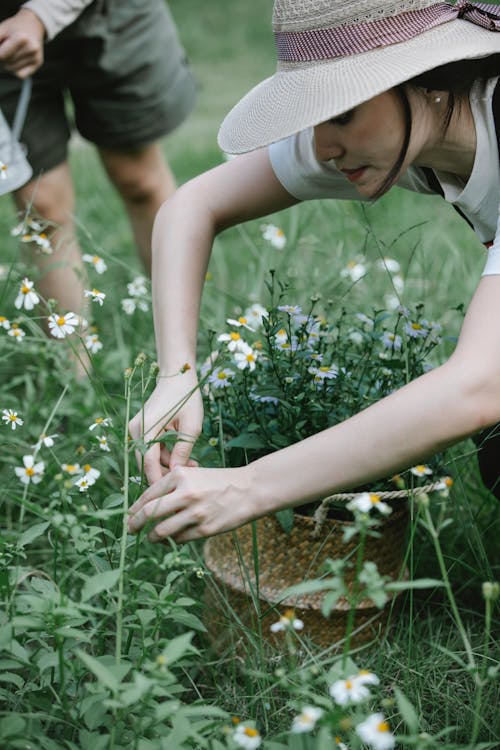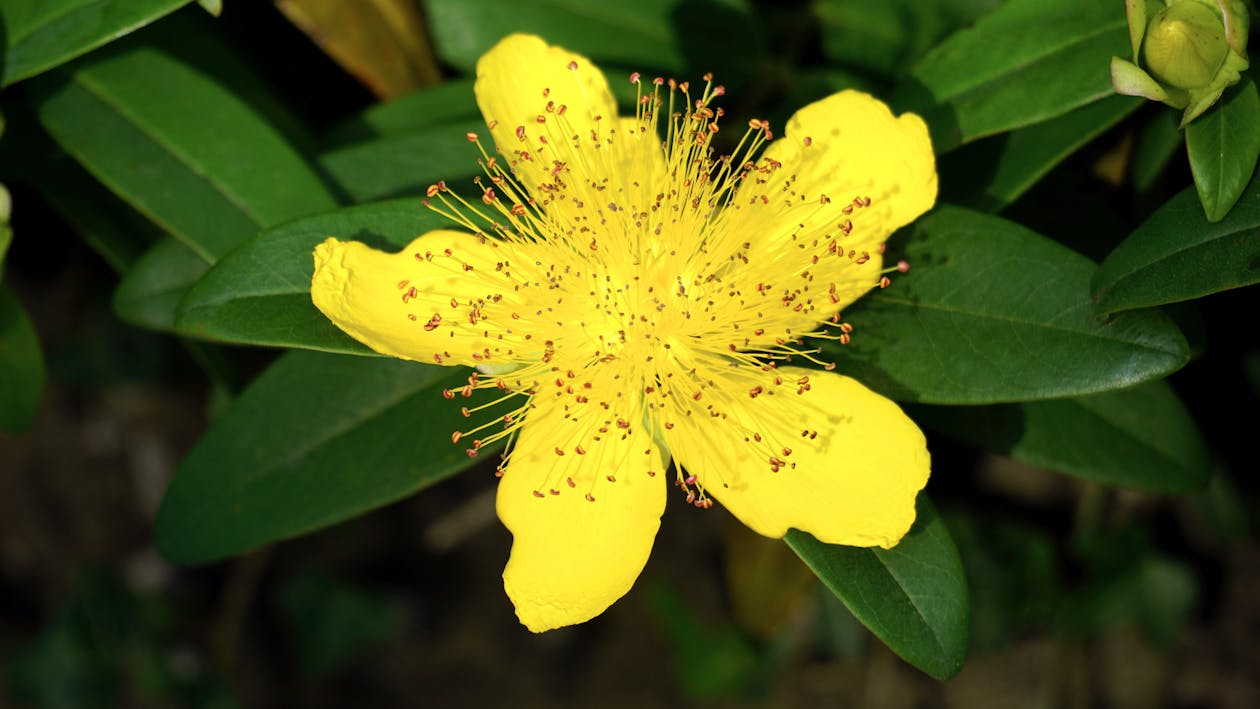Let’s go and take on a wander through the hedgerows to discover the abundance of health-boosting plants – all ripe for the picking.
The sun is shining, a warm breeze sweeps across a field, and my nose is on high alert for the sweet smell of luscious blooms. It’s my favorite time of year – summer. While many are excited about sunbathing, barbequing, and swimming, there’s something I look forward to even more – foraging.

Foraging is the act of gathering plants from their wild habitat, which are then typically used for food, medicine, or self-care and beauty products. For me, foraging is more than merely gathering wild edibles and natural medicinals. It’s a way to strengthen one’s physical, emotional, and spiritual connection with Mother Nature and her natural cycles.
We can forage all year round, but all my favorite medicinal herbs are in full force during the summer season. Free plant medicine for all!
St. John’s wort

As July hits, it is prime time to be on the lookout for bright and sunny St. John’s Wort flowers. St. John’s Wort is premier plant medicine that’s most famous for its help with depression, mainly if your depression corresponds with gut problems. St. John’s Wort has an affinity for the nervous system and will physically help repair nerve cells and helps nerve cells communicate more efficiently. This is extremely helpful if you are always on edge or constantly feel stressed.
St. John’s Wort is also an all-star when it comes to aiding with detox in the liver. In fact, it’s so good at this that you should not take St. John’s Wort if on pharmaceuticals because it will clear out the pharmaceutical before your body can absorb it. This goes for pharmaceutical antidepressants as well, so if you are prescribed antidepressants, it would be best to choose a different herb that helps with depression.
My favorite way to work with St. John’s Wort internally is as a tea. Tea can be made with freshly picked flowers, buds, leaves, or made after drying to be enjoyed throughout the autumn, winter, and spring. St. John’s Wort is famously used as a topical oil to help with nerve pain or speed up the healing of bruises, sprains, and other wounds. However, when you make St. John’s Wort topical oil, fresh plant material must be used. Do not dry the plant first because its medicinal constituents will degrade, and it will no longer be effective.
Mugwort

When I think of summer plant magic, mugwort immediately comes to mind. Mugwort is a great plant that can be drunk as tea or smoked. But why would we want to forage mugwort?
Mugwort is worked with for dreamwork and can even lead to lucid dreaming. Wherever you are in your dreaming journey, it can help enhance your dream state. Let’s say you can never remember your dreams – if you drink or smoke mugwort before bed, you may find yourself starting to remember your dreams. Maybe you already remember your dreams, but they are always silent – with mugwort, you may find that people now start talking in your dreams and they are noticeably audible. Perhaps they will switch from black and white to color. If you work with mugwort consistently, you can achieve lucid dreaming and go on adventures around the world once your head hits the pillow. Mugwort can be used fresh or dried.
Red clover

Red clover is so abundant there is a good chance it is even growing in your backyard. It grows throughout spring, summer, and even into early autumn. Lucky for us, red clover is uber medicinal!
Red clover is a nutritious herb, which means that it is jammed packed with vitamins and minerals. When taken consistently, you may notice improvements in skin, hair, teeth, and nails. Red clover is also revered for cleansing one’s blood and eliminating toxic waste. It is most effective when drunk every day. To extract all the nutrients red clover holds, one must bring water to the boil, pour water over the herb, cover, and let sit for at least 4 hours. I like to prepare my red clover before going to bed, then strain and drink it when I wake up the following day. It blends well with other nourishing herbs like stinging nettle leaves, dandelion, oat straw, and chickweed. Red clover can be used fresh or dried.
Foraging as meditation
Not only does foraging get you outside, moving, breathing fresh air, and soaking up more Vitamin D, but it’s one of the best ways to blossom and strengthen your relationship with the natural world. You learn a plant’s cycle, how they grow and develop through the seasons, and with some plants, even throughout the years. It always amazes me how spiritual this process can be.
Foraging is a form of meditation and mindfulness. One must slow down in order to forage safely and sustainably. You must be still and aware of one’s surroundings when spotting a plant, going through a checklist of identifiers, and surveying the surrounding area to ensure that a specific plant is abundant enough to forage. The process, from beginning to end, shifts you into the present moment. That is medicine all on its own.
Not only is foraging good for our emotional and spiritual health, but it is fantastic for our physical health. Foraging is movement. I either go for a nice walk or take my bike out while I search for plant medicine. The combination of this physical, mental, and spiritual practice enhances our health holistically.
Think before you pick
When it comes to touching and ingesting plants in the wild, safety should be a top priority. Always be 100% sure of a plant’s identity before touching it. However, this fear should not prevent you from taking up this fantastic hobby. Foraging is such a unique activity that connects you with Mother Nature, is healthy, and is fun. Go out this summer and give it a try. Happy foraging!
5 Tips for beginners
- Don’t buy expensive equipment, especially when first starting out. Instead, bring a big paper bag that you can get from any grocery store and a regular pair of scissors.
- Know what you are going to do with the plant before you go out foraging. There is nothing more wasteful and sadder than gathering a plant, deciding you will figure out what to do with it later, and then it going bad and needing to be thrown out.
- Find at least two reliable sources that have the same list of plant identifiers. Having two lists helps you confirm you have accurate information. When I say reliable, I do not mean just because someone has a blog that automatically makes them an expert. Would you please take a look and make sure they are a trusted herbalist, forager, or gardener?
- Take a physical checklist of all the plant identifiers with you. Go through that list every time you forage for that plant. Every time!
- Do not get cocky! Once you start to get the hang of foraging for plants, your confidence will grow. That’s great, but do not lose your vigilance. Some plants have poisonous lookalikes, and even the most experienced herbalist can forget to go through all the plant identifiers, and that mistake can be their last. Always be careful.

